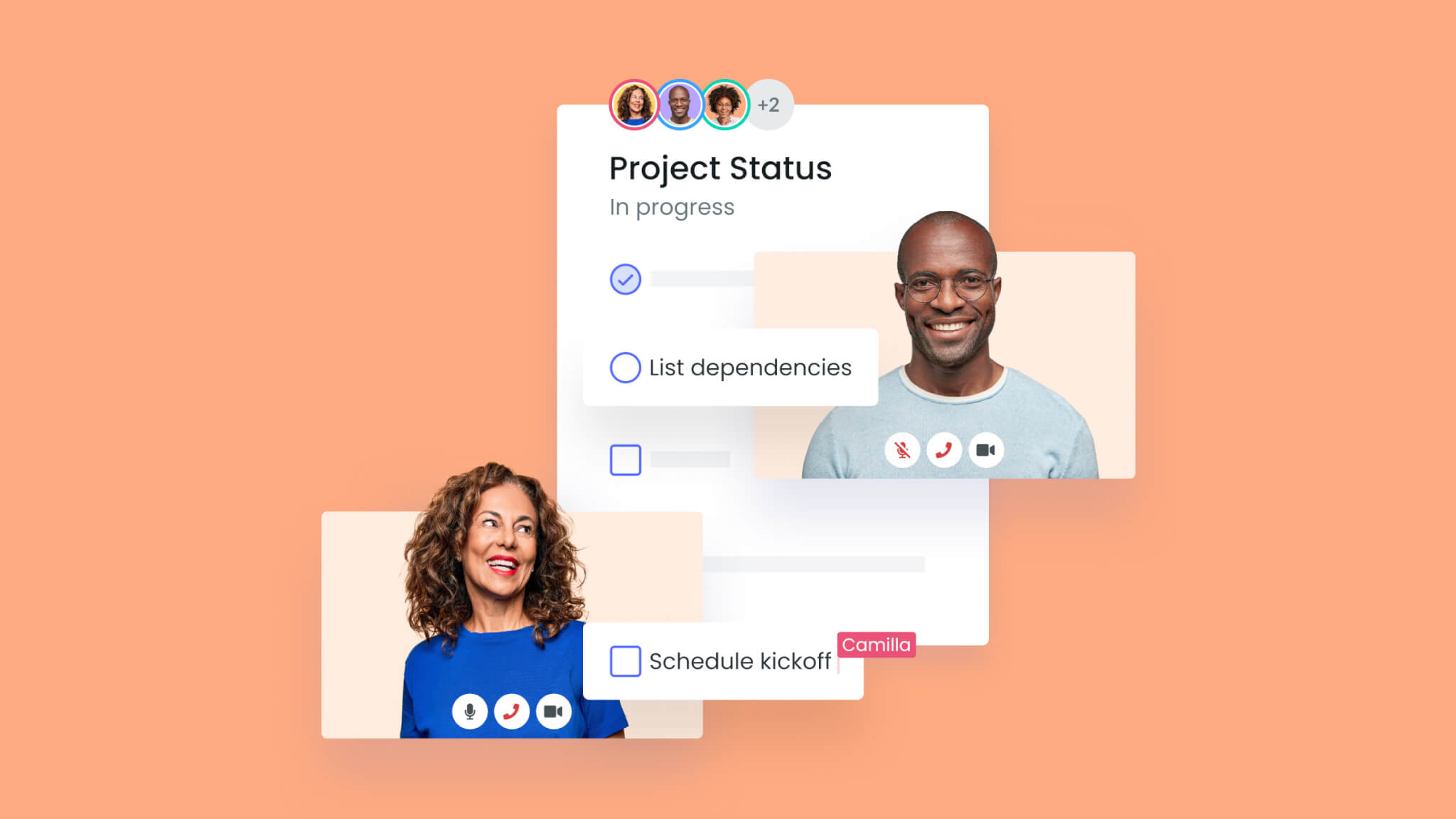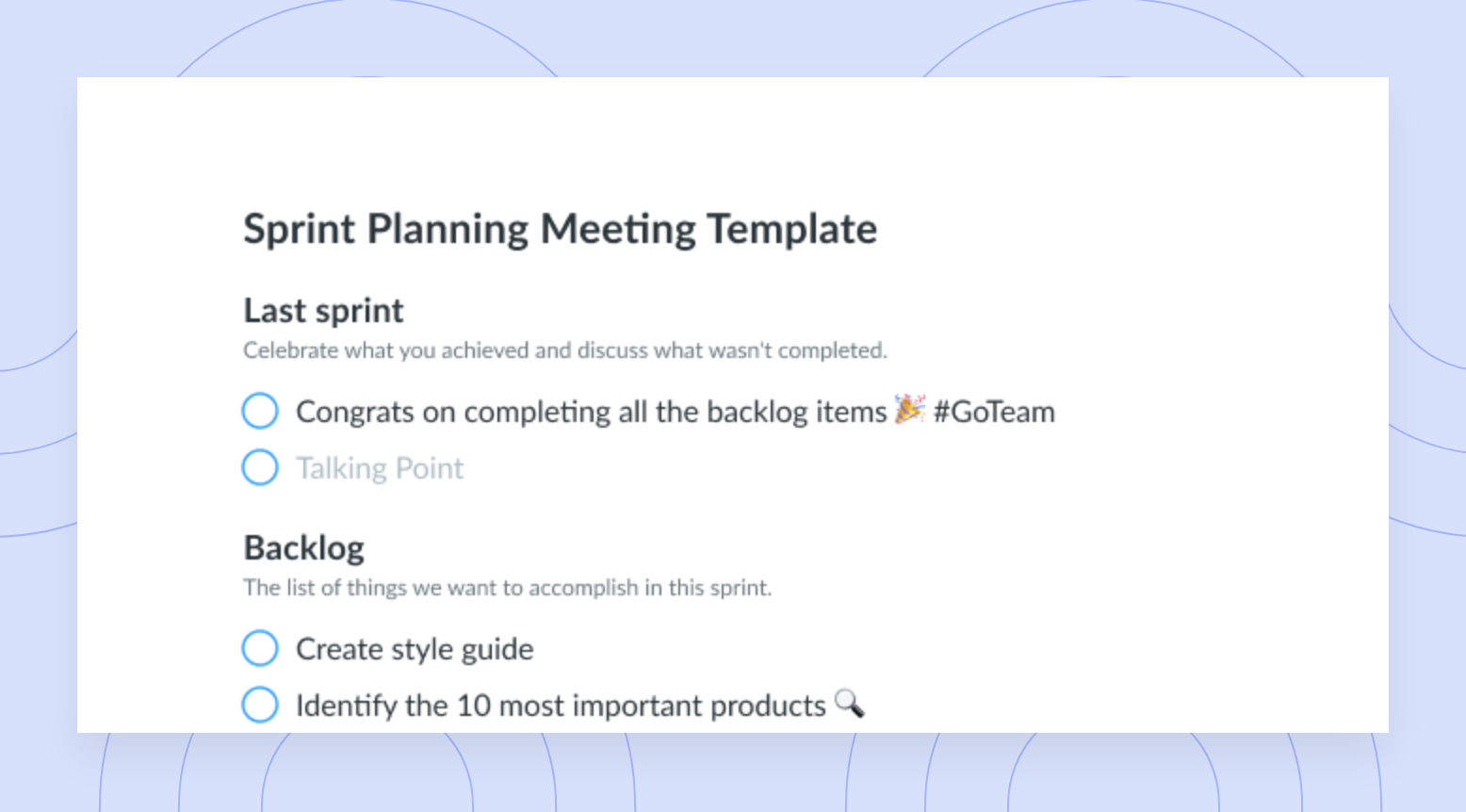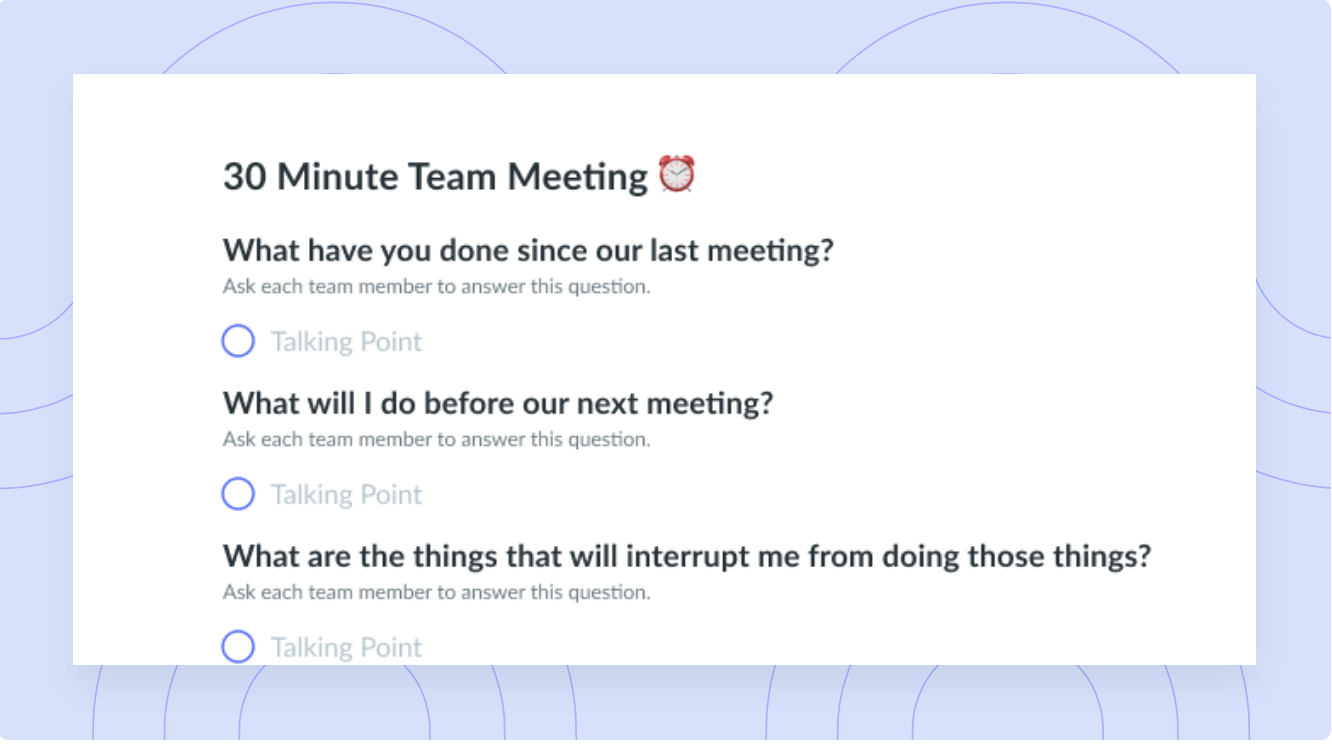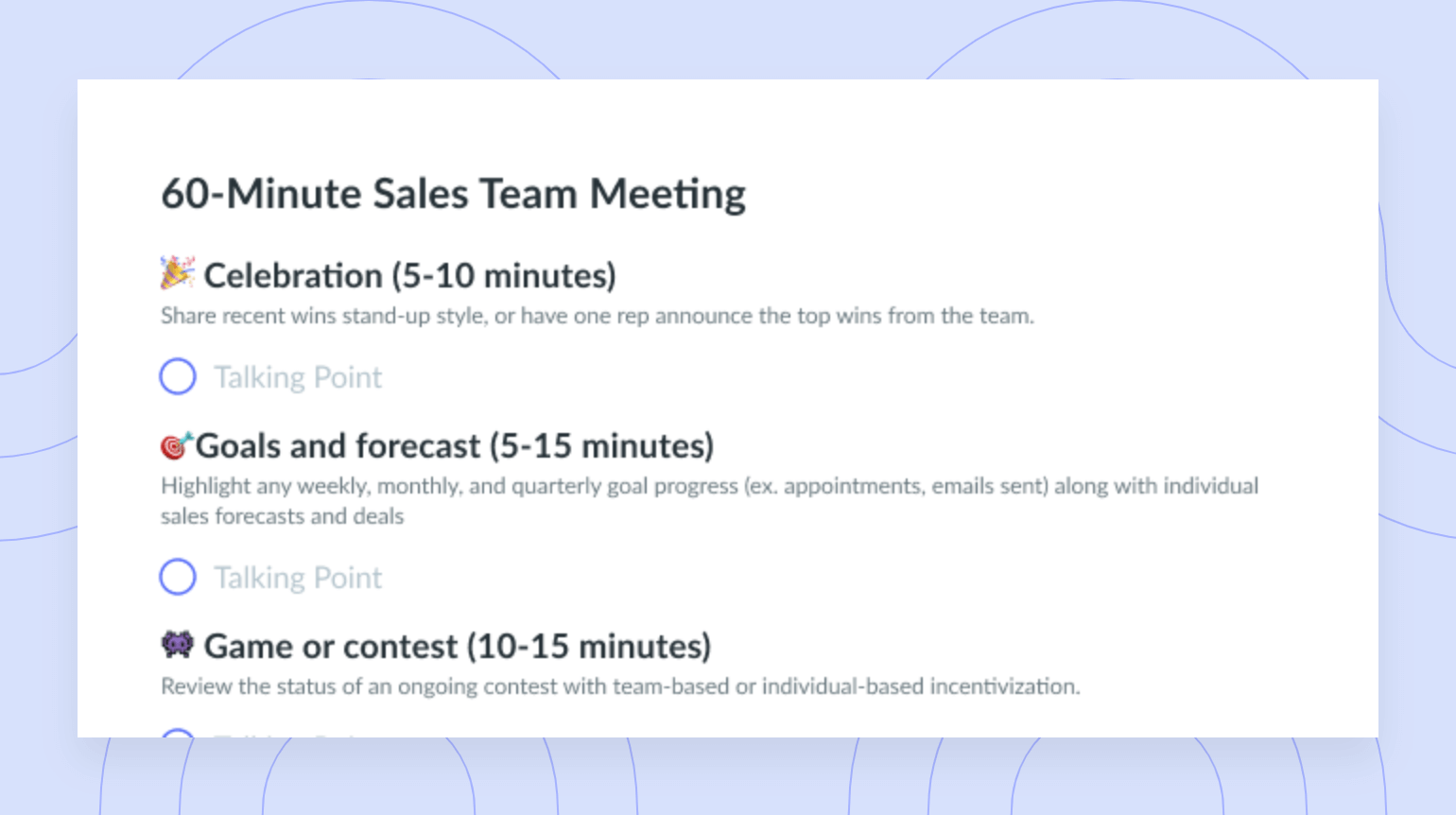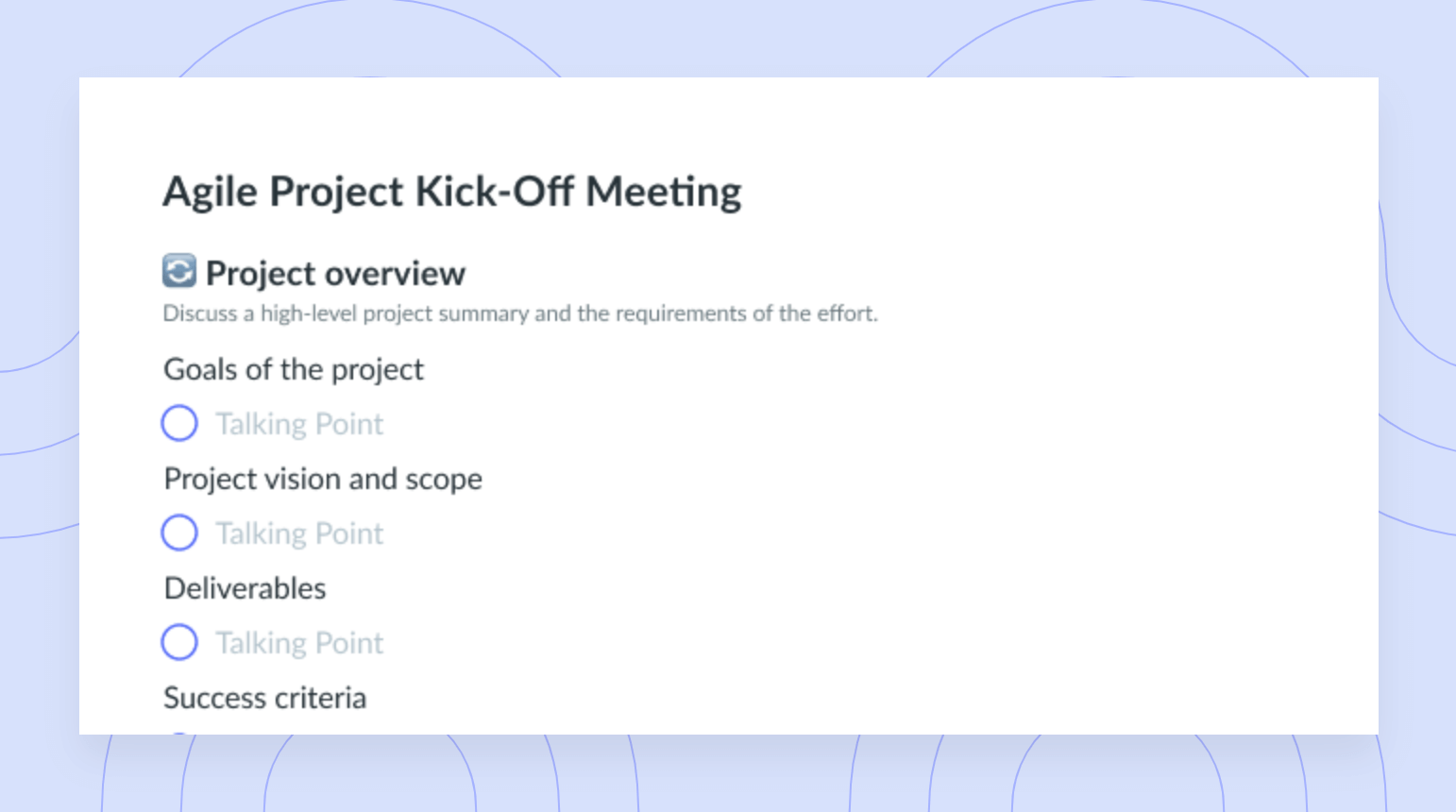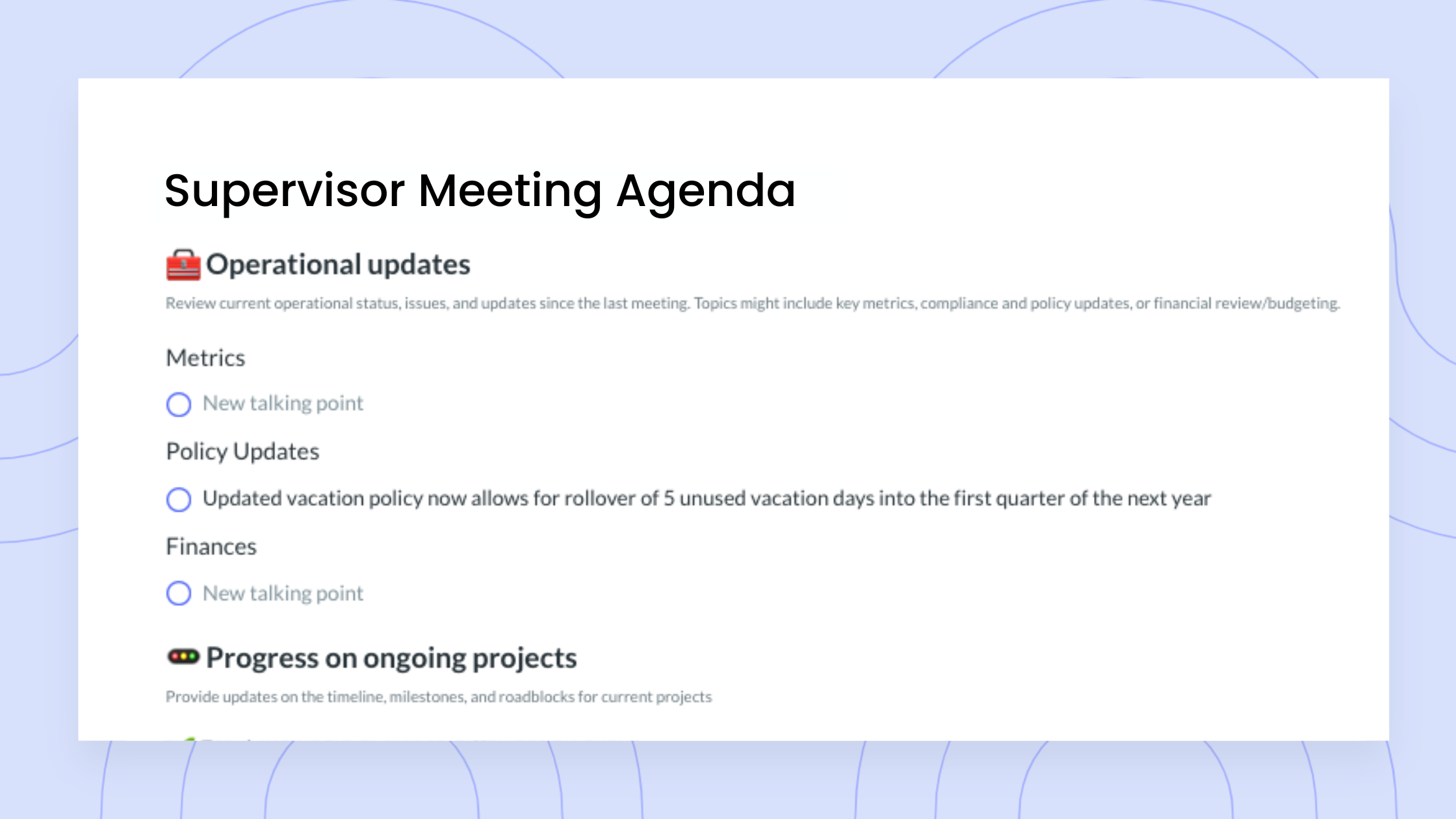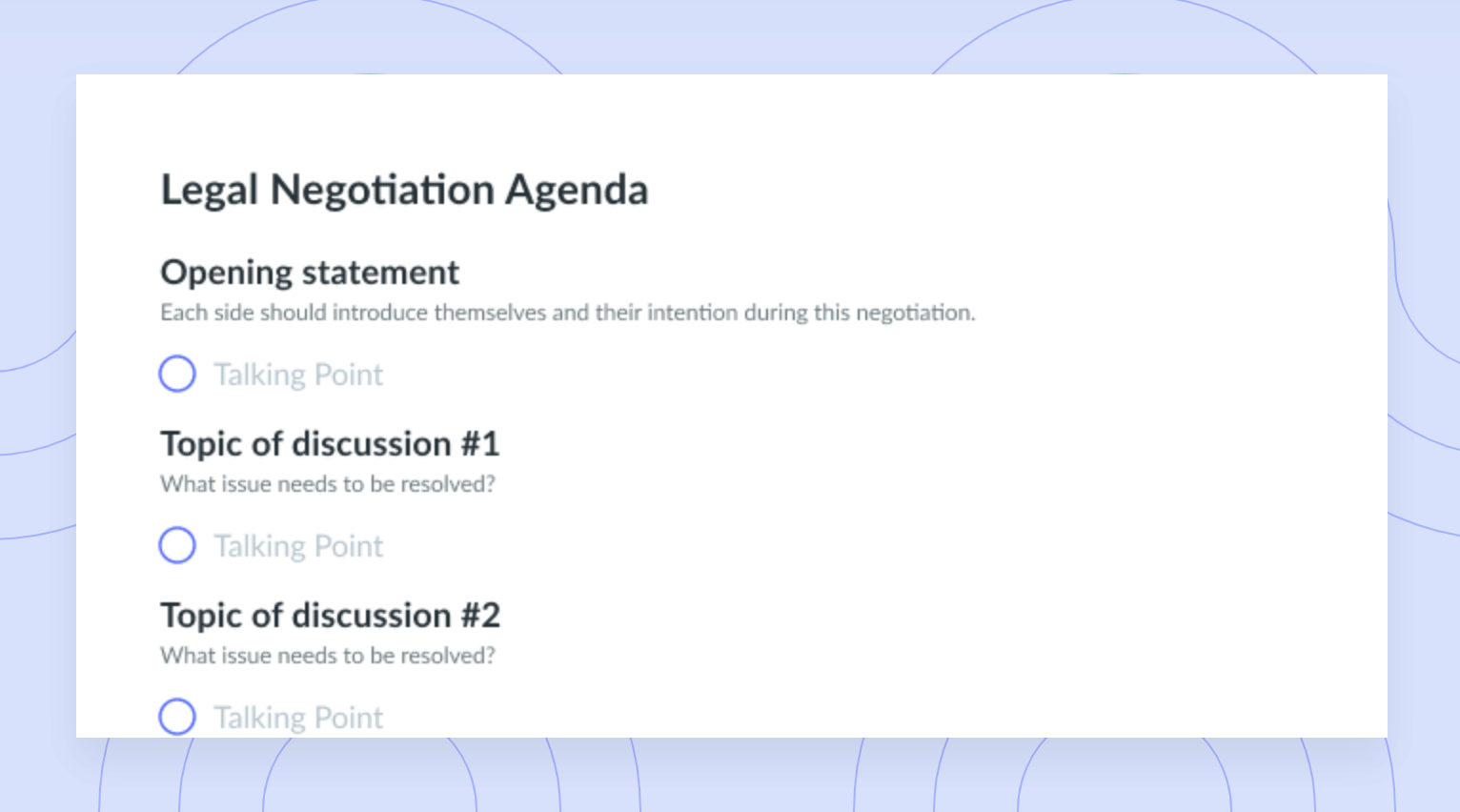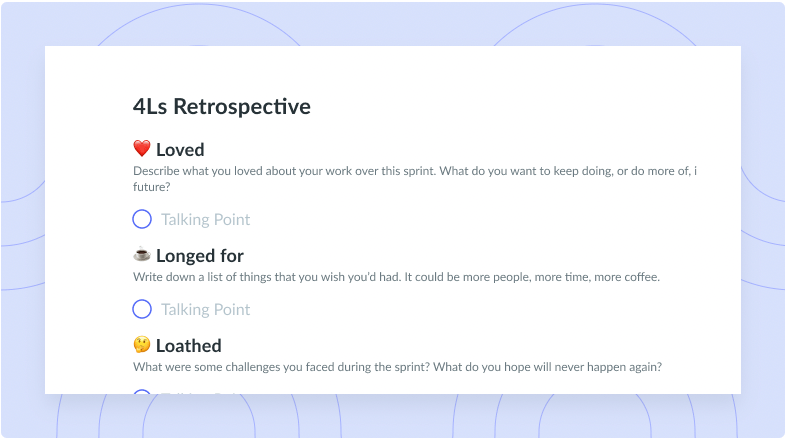5 Ways to Run Productive Meeting With Linear and Fellow
Combining Fellow and Linear for meetings unlocks a powerhouse of potential to make your development team more productive!
Product budgets are seemingly shrinking but the demands for product growth are going way up. One “hidden” area to save some extra budget is by making your product meetings more efficient—and if you’re not yet sold on why this would save you some cash, you can try out Fellow’s meeting cost calculator to measure how much your product meetings are actually worth. But by combining Linear and Fellow for meetings, you can improve communication, goal alignment, progress tracking, and sprint planning to make product management easier and more efficient.
What is Linear?
Linear is a software tool for product development teams. It can help software engineers organize sprints, track progress on feature development, and integrate into the rest of the team’s tech stack. Some key features include automated workflows, collaboration hubs for getting feedback on projects, and a triage area for handling new bugs as they’re identified. According to G2, users love how intuitive the tool is, making it great for beginners and small projects as well as enterprise-level teams.

Streamline issue tracking in meeting agendas and notes
Create, import, and manage Linear issues directly from your meeting notes with Fellow’s Linear integration. Try it today!

Ways to run productive meetings with Linear and Fellow
1Set objectives
Objectives and key results (OKRs) are a popular framework for organizing your team and project goals. You’ll need to set a strategic objective, and then identify 2 to 4 key, quantifiable results that will prove you’ve achieved your goal. In Fellow, you can hold a meeting to align on what OKRs you’re planning to focus on for the year, quarter, and even for your upcoming sprint. Then, you can use Linear to get reports on your success metrics. Bring these results to your OKR follow-up meeting at the end of each sprint to see what worked or what didn’t work, and then create a plan to optimize for the future.
2Work better cross-functionally
When working cross-functionally, staying on top of progress can be challenging when different teams use different tools. You can centralize your project’s action items in Fellow by building collaborative meeting agendas that allow all departments to have their say in what talking points should be brought up in the meeting. From there, you can assign action items in Fellow and collaborate on the actual work in Linear with its commenting features. You can also grant access to multiple departments in Linear to see the product roadmap, which then allows cross-departmental meetings to flow more smoothly.
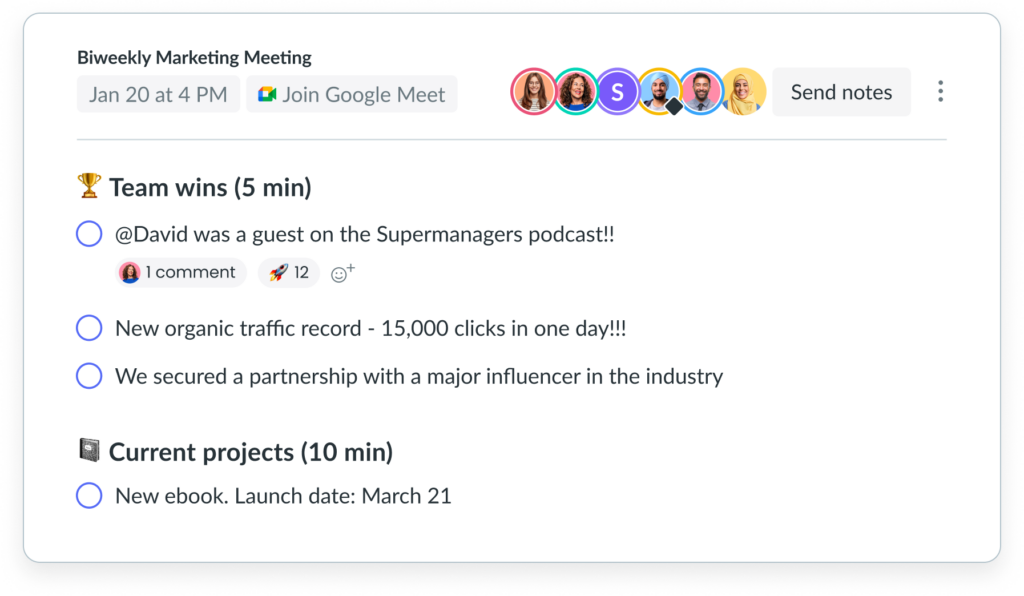
3Keep track of progress
Use Fellow as a central hub to keep track of the tasks, next steps, and Linear issues. With Fellow’s Linear integration, every project collaborator will be aligned on the project status, regardless of the team they’re on or their project management tool. Between the two tools, you’ll have a good idea of how far your project is progressing, and you can use Fellow meetings to determine if the process needs to be optimized or if a different activity should take priority in the sprint.
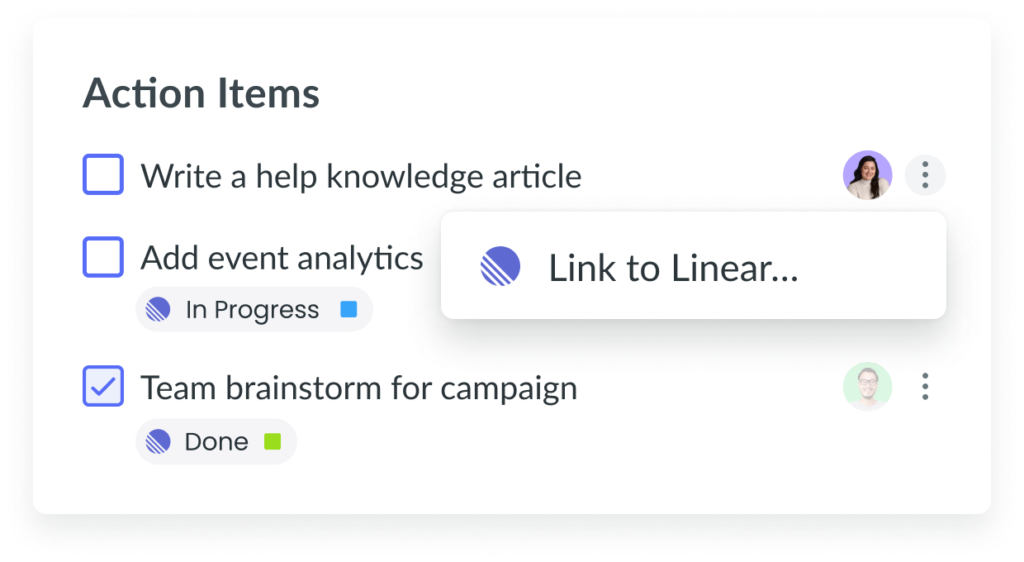
4Use templates to standardize communication
Using a standardized tool with all team members will improve communication and expectations. For example, working from the same meeting agenda templates will help ensure that you cover all the necessary points in each meeting type, regardless of whose turn it is to host the meeting. Some examples of these include:
- Sprint planning meetings to discuss how you’ll assign and track work for the upcoming sprint in Linear.
- Quarterly product strategy meetings where you can discuss which features you are prioritizing from the feature backlog that you’ve stored in Linear.
- Product management meetings where you can review key performance indicators (KPIs) in Linear, collect feedback from multiple departments, and create action items on product plans.
We’ve distilled everything you need to know about meetings into 500+ free, ready-to-use templates.
5End each meeting with clear action items and next steps
Action items help your meeting attendees understand what’s expected of them post-call, and help keep them accountable for their tasks. If you use Linear for project management and issue tracking, you might end up adding “Create Linear issue” to your to-do list. But with Fellow’s Linear integration, you can quickly and easily link an action item to Linear. Once linked, the item status, due date, and assignee will stay in sync between both tools—no need to duplicate work!
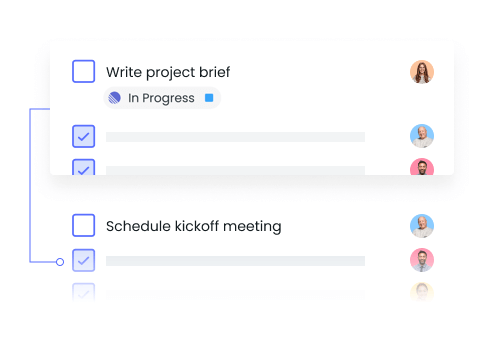
Benefits of using Linear and Fellow
- Reduce the cost of coordination. When you have a tool to ensure your individual tasks are completed on time, you’ll be able to use employees for creative and critical-thinking projects rather than coordination tasks. This way, you’re making the most value out of your hires!
- Help manage product development. Keeping track of your product roadmap and the to-do’s around each new feature release will help you stay aligned as you work towards your long-term plan. Teams will be able to see goals and progress in one place, too, so there will be no misunderstandings there.
- Leverage seamless workflows without disrupting dynamics. Help your entire team succeed by reducing context switching that occurs when administrative tasks distract from strategic work. Then, you can begin to encourage more deep focus time!
- Speed up the process of alignment. When everyone knows who is responsible, what due dates are upcoming you’re much less likely to duplicate or overlook action items. You’ll also reduce any friction around ownership, which allows team members to work more autonomously!
Best practices for product management meetings
1Write clear, simple issues
Miscommunications are a big challenge, especially if you’re working in a remote work environment where you can’t read tonality or body language over digital channels. When syncing with your team, communicate shorter and simpler messages that are easily digestible. Where possible, supplement your point with a visual aid such as a screenshot of the code where the bug is, or write bullet points on how to replicate the issue on production. This will help the rest of your team understand, find, and fix the issue much faster.
2Engage the whole team before deciding on an implementation plan
Getting buy-in from the rest of your team is important, especially if you’re pushing a big release. Other members of your team might have unique perspectives—like knowledge of security risks or customer requirements that might impact your implementation plan. Including a section for feedback or discussion on the implementation efforts in your meeting agenda is a great practice to ensure this doesn’t get overlooked.
3Have the project owner delegate the work
Delegating work is a tricky task and surprisingly one that not everyone wants to do often. The reason delegation is hard is that we all want to have ownership over the projects that we’ve put so much thought or effort into already, and we struggle to see them being executed by someone else. Relying on a project owner to delegate the work removes any bias in the product ownership process. It also gives the team a single, central person to go to for any questions, concerns about timelines, or feedback about project requirements. Overall, it’s a great approach for improving communication on your team and ensuring fair distribution of work based on availability or skill set.
4Create a goal that moves you forward
Your team needs a purpose and a set of goals to help them aim towards. Without setting useful goals, your team members may interpret success differently and will ultimately end up with different results that don’t improve the product. A “forward-moving” goal is one that is attainable yet challenging, has a defined timeframe for success, and has measurable results. If your team is struggling to land on a common goal, try one of these tips on decision making, such as gathering more information about the problem at hand and using that as the basis for goal creation this sprint.
5Design projects to be completed in 1-3 weeks with a team of 1-3 people
Product design and development sprints are intended to be short as part of agile working approaches. Keeping your project length under three weeks gives you enough time to start and finish work without making the project feel like it’s dragged on for ages. It also means you have more frequent milestones to celebrate successes, review your current work, and adjust for project changes. Working within a small team also allows you to adapt to changes faster and communicate more frequently. It also can help you make decisions easier and spend more time getting work done.
Parting advice
Fellow and Linear are two great tools that can work in tandem to make your product management meetings much more productive, especially when you’re aligning across multiple departments. With Linear, you can track specific product details such as bug-tracking tickets, comments on project updates, and KPIs. Then, you can bring this information into Fellow when you’re doing product management or sprint planning meetings so you can stay on top of your goals, ensure work is assigned fairly, and support team decision-making efforts!




